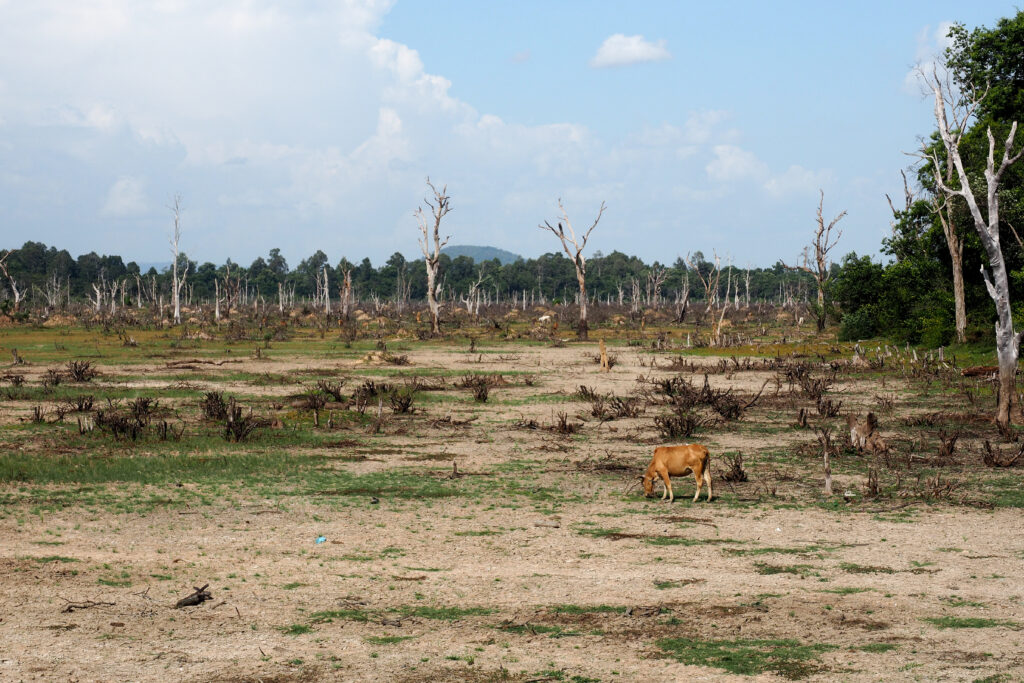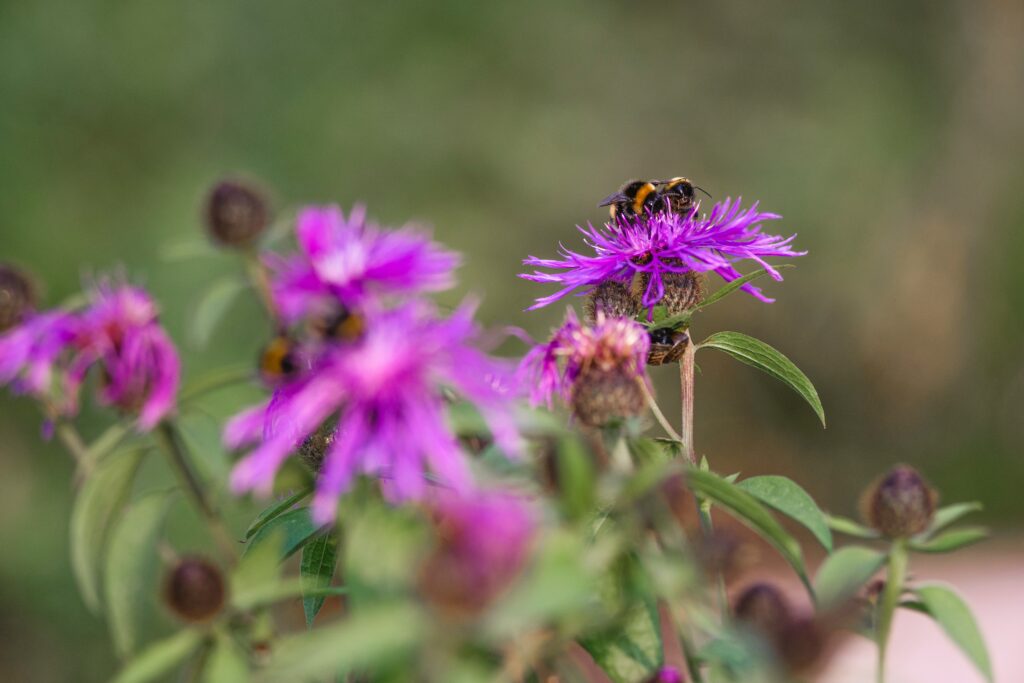Who really pays the price for unsustainable food systems?
The true cost of what ends up on our plates is often paid by people and ecosystems elsewhere. On the European Day of Foundations and Donors we look at the importance of building a food system that is more just, secure and sustainable.
1 October 2025

By 2050, the global population is expected to reach nearly 10 billion. At the same time, global demand for meat, seafood, eggs and dairy is increasing. But the way we currently produce protein cannot scale to meet this demand sustainably or fairly.
Today, we’re celebrating the European Day of Foundations and Donors, a moment to recognise the essential role philanthropy plays in building a more just, sustainable society.
At GFI Europe, more than 98% of our funding comes from foundations and individual donors. This support drives our work to progress the entire alternative protein sector. Philanthropy enables us to fund open-access research, build scientific and policy infrastructure, and create tools that the broader ecosystem can use, accelerating change that might not otherwise happen.
The theme of this year’s European Day of Foundations and Donors is “Towards equality as a lived reality”. This goal sits at the heart of our mission at GFI Europe: to build a food system where safe, sustainable, and nutritious food is available to everyone, everywhere.

How industrial animal agriculture drives inequalities
Animal agriculture is responsible for around 20% of global greenhouse gas emissions, equivalent to the emissions from every plane, car, train, and ship combined. It also uses 80% of all agricultural land globally and is a major driver of deforestation, water pollution, and biodiversity loss, all while producing less than 20% of the world’s calories.
The consequences of this are not felt equally. Communities living near industrial farms are frequently exposed to pollution, antimicrobial resistance, and climate vulnerability, without having a say in the system itself. For example, a recent study found that ammonia levels are four times higher in agricultural areas of Europe than in non-agricultural areas. This not only raises respiratory health risks, but also “over-fertilises” surrounding habitats, damaging sensitive plants and driving biodiversity loss.
This is one of the most overlooked inequalities in our global food system: the cost of what ends up on our plates is often paid by people and ecosystems elsewhere.
Much of this cost is driven not just by demand for grazing land, but also by the vast quantities of feed required to sustain intensive meat production, including the 25 million tonnes of soy Europe imports every year, with a large majority coming from Argentina and Brazil where vast tracts of ancient forest are destroyed each year to make room for soy and cattle production. This contributes to the displacement of Indigenous communities and major biodiversity loss.
How alternative proteins can help build a fairer food system
Alternative proteins, made from plants, fermentation, or cultivated directly from animal cells, offer a more efficient way to produce the foods people enjoy, without the heavy environmental and social costs.
Compared to conventional animal products, alternative proteins could reduce land use by up to 90%, water use by up to 93%, and emissions by 92%.

Agriculture already accounts for around 40% of all land use in the European Union. That’s a significant share of space that could otherwise support nature, biodiversity, or more sustainable farming systems. And even modest shifts could have a significant impact.
A New Land Dividend, a report written by Green Alliance and commissioned by GFI Europe, found that replacing just 20% of Europe’s meat intake with alternative proteins could reduce food-related land use by up to 45%, emissions by 34%, and water use by nearly 20%. That’s equivalent to an area of land the size of Germany, which could be restored to nature, used for more sustainable farming, or made more resilient to climate change.
This has benefits for people, too. While the world produces enough food for everyone, climate disruptions are making harvests less reliable and driving up the price of staple crops. In high-income countries, where meat consumption is typically high, we can afford to continue feeding these crops to animals, which diverts large volumes of food to animals rather than people.
In Europe, for example, around 45% of all the crops we produce are fed to farmed animals instead of people. This represents a huge missed opportunity to use land, water, and energy more efficiently. By diversifying our protein supply, we can use fewer resources, reduce competition for crops, and ease pressure on regions that are more vulnerable to food insecurity.
Crucially, alternative proteins can also be optimised to target the most pressing nutritional needs. Plant-based meat tends to be high in protein, low in saturated fat and a source of fibre, and can also be fortified with important vitamins and minerals. In Europe, where most people eat too much processed meat and not enough fibre, this presents a real opportunity to improve public health without requiring major shifts in eating habits.
Researchers are also exploring how alternative proteins, especially plant-based and fermentation-made, could support communities in other parts of the world, including the global south. A recent report from UKRI highlighted the opportunity to develop nutritious, affordable options in Kenya, leveraging the country’s extensive research ecosystem and helping to diversify farmers’ incomes. Supporting this kind of research could play a role in addressing pressing health challenges like malnutrition, diet-related illness, and micronutrient deficiencies, helping to ensure that everyone, regardless of where they live, has access to healthy, high-quality diets.
But for this to happen, alternative proteins must be affordable and accessible for all, not a premium option for a few.
How philanthropy can accelerate progress
Like any new innovation, early alternative proteins have been more expensive than their conventional counterparts. But, just as we’ve seen with solar panels and electric vehicles, costs decrease as research advances and the market grows. Production becomes more efficient, supply chains improve, and consumer demand grows, all of which help to reduce costs.
But reaching this point requires upfront investment in infrastructure, research, and supportive policy, areas that are typically overlooked by private investors. Philanthropic support helps bridge this gap by enabling the early-stage, system-level work that allows the sector to scale.
This kind of funding plays a catalytic role in the development of the entire ecosystem. Donations to GFI, from individuals and foundations, are multiplied through our strategic efforts to direct funding, evidence, and insights to where they’re needed most.
Alternative proteins alone won’t automatically lead to a more equitable food system. That’s why GFI is working to ensure they’re developed and scaled in ways that deliver real benefits. Our work focuses on building the alternative protein ecosystem as a public good. We’re independent of industry, and our mission is to build a fairer, more sustainable food system by making alternative proteins delicious, affordable and accessible.
Thanks to our donors, we fund open-access scientific research that’s available to everyone. In a commercial setting, valuable discoveries are often kept behind closed doors, benefiting only the company that made them. But because we keep our research open-access, scientists around the world can build on it, startups can accelerate product development, and governments can make better-informed decisions.
We also create shared tools, databases, and other resources so that researchers, entrepreneurs, and public institutions across Europe can engage in this field, regardless of their size or budget.
And we work closely with governments to integrate alternative proteins into national and EU-level strategies to improve food security, reduce environmental impact, and create economic opportunities. Through donor support, we’re able to provide independent, evidence-based guidance focused on the public interest.
For example, GFI India is exploring how protein innovation can support local production of nutrient-dense, sustainable food, particularly by improving the bioavailability of nutrients in indigenous crops. Their recent work examines how processing methods can enhance the absorption of key nutrients in plant-based foods, an essential step in developing affordable, nutritious protein sources that meet local dietary needs. GFI Brazil is working to develop action plans and technical strategies to support locally grown, nutritious plant proteins like beans for use in alternative proteins, making sure that equitable production is baked into the foundations of the protein transition. This kind of research ensures that alternative proteins provide real nutritional value in contexts where it’s needed most.
This kind of early-stage, system-level work is essential for transforming the food system, and it isn’t usually funded by the private sector; it’s funded by philanthropy. By supporting GFI Europe, donors are helping to create the foundational knowledge, tools, and policies that maximise the benefits for people and the planet.
To our donors, we’d like to say thank you. Your contributions are building towards a more sustainable and equitable food system, where sustainable, secure, and nutritious food is available for everyone, everywhere.
If you’d like to learn more about how you can support GFI Europe’s work, please email us at europe-philanthropy@gfi.org. Together, we can ensure that the future of food serves people, planet, and animals alike.

